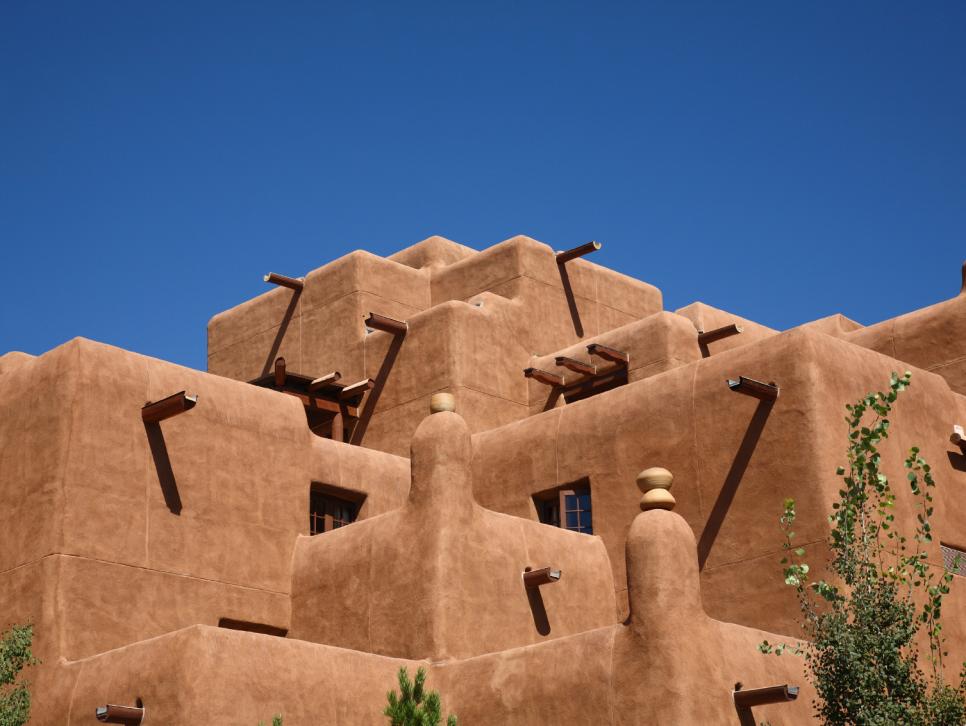
Adobe is made from a mixture of clay, sand or silt, straw, and water, and is often formed into bricks that are held in place with a clay-based mortar. Late 19th-century photographs of Zuni and Taos Pueblos show many ladders raised against the walls of multi-leveled adobe buildings, as well as ladders emerging from interior rooms. The structures contained within these alcoves were mostly blocks of hard sandstone, held together and plastered with adobe mortar. Specific constructions had many similarities, but were generally unique in form due to the individual topography of different alcoves along the canyon walls. Her grandparents maintained the Pueblo culture in their family, and her mom ensured that she and her siblings were taught Pueblo values from a young age.
Plazas and kivas
Halfway down the street, she saw the Avila Adobe with a condemnation notice from the City health officials stating the building was slated for demolition. Knowing that the Avila Adobe was the oldest house in Los Angeles, she began to raise money to repair it. She also had a dream to create a "Mexican marketplace" near the Avila Adobe where people could learn about Los Angeles' Spanish and Mexican heritage. Through her efforts many of the historic buildings around the plaza were saved. She invited artisans and craftspeople and opened Olvera Street on Easter Sunday, 1930.
Plaza Catholic Church
The Los Angeles Census of 1844 lists Encarnación Avila, age 40, as a widow living in the house with one daughter. For a brief time, from January 10th through the 19th, 1847, the adobe was commandeered as a military headquarters by the invading North American army under Robert Stockton. Opened in 2016, the Italian American Museum of Los Angeles (IAMLA) is located in the historic Italian Hall, which was constructed in 1908 to serve as a gathering place for the Italian community. Today, the Italian Hall is the oldest remaining structure from LA's Italian enclave, and is listed on the National Register of Historic Places. The IAMLA is jointly operated by the Historic Italian Hall Foundation and the City of Los Angeles.
What are Pueblos Made of?
Several federally recognized tribes have traditionally resided in pueblos of such design. Later Pueblo Deco and modern Pueblo Revival architecture, which mixes elements of traditional Pueblo and Hispano design, has continued to be a popular architectural style in New Mexico. The Avila Adobe was constructed in 1818 by a prominent ranchero, Francisco José Avila, a native of Sinaloa, who was alcalde, or mayor of Los Angeles in 1810. Following Francisco Avila's death in 1832, his second wife, Encarnación Avila continued to live in the house with her two daughters.
Garnier Building / Chinese American Museum

The Sepulveda House is a 22-room Victorian house built in 1887 in the Eastlake Victorian style. The original structure included two commercial businesses on the Main Street side and three residences on Olvera Street. The Sepulveda House represents the architectural and social transformation of Los Angeles from a city of purely Mexican traditions to a multicultural blend of Mexican and American cultures.
Pueblo planners OK $30 million urban renewal apartment complex project - Pueblo Chieftain
Pueblo planners OK $30 million urban renewal apartment complex project.
Posted: Sun, 15 Oct 2023 07:00:00 GMT [source]
For a period of time, pueblos throughout the Southwest were connected by a network of roads that radiated from Chaco Canyon, which is believed to have been a cultural epicenter. Remnants of this roadway system are evident throughout New Mexico and Arizona today. Hundreds of Ancestral Puebloan dwellings are found across the American Southwest. With almost all constructed well before 1492 CE, these Puebloan towns and villages are located throughout the geography of the Southwest.
The Old Plaza Firehouse
Today, adobe-style homes are most commonly found in the Southwestern United States. Cities such as Santa Fe and Albuquerque, New Mexico require specific design guidelines in their historic areas, making these types of homes even more common. Florida and Southern California also house many adobe-style homes due to their hot, extreme weather. Adobe-style homes have a unique, rustic look, but their features are rooted in functionality. The spatial organization of a typical Pueblo village is arranged to reflect the structure of the universe and to symbolize the ancestral search for the middle place.
However, recent trends have shown a more conservative shift among some voters. The area is politically active, with residents participating in local and state elections. Located in southern Colorado, Pueblo sits in a valley along the Arkansas River, surrounded by rolling hills with the Rocky Mountains not too far off.
EXPLORE THE LATEST LOCAL NEWS ARTICLES, CURRENT HAPPENINGS, SUCCESS STORIES AND MORE!
Constructed of natural, durable materials and featuring thick walls and flat, rounded roofs, adobe-style homes are ideal for dry and harsh climates like the Southwestern United States. Recent adobe-style homes are appropriated from the original indigenous architecture, often built with timber frames instead of earthen materials. In each Pueblo, various groups are responsible for the performance of culturally significant activities in accordance with the ceremonial calendar. Activities include public components such as songs and dances that take place in the village plazas and private components that take place within the kivas.
Although the Main Street facade has not changed significantly, the Olvera Street facade has been altered and repaired over the years. The theatre was built by William Abbot, the son of Swiss immigrants who settled in Los Angeles in 1854. In 1858, he married the woman for whom he would name the theatre, Maria Merced Garcia, the daughter of José Antonio Garcia and María Guadalupe Uribe, who were long-time residents of the Los Angeles pueblo.
The cliff dwellings of Mesa Verde are some of the most notable and best preserved in North America. Sometime during the late 1190s, after primarily living on the mesa tops for 600 years, many Ancestral Pueblo people began moving into pueblos they built into natural cliff alcoves. The structures ranged in size from one-room granaries to villages of more than 150 rooms. While still farming the mesa tops, they lived in cliff dwellings, repairing, remodeling, and constructing new rooms for nearly a century. In the mid-1200s, the population began migrating to the south, into present-day New Mexico and Arizona. The 2.2-acre LA Plaza de Cultura Y Artes campus includes two historic and newly renovated buildings (the Vickrey-Brunswig Building and Plaza House) that are surrounded by 30,000 square feet of public gardens.
The building design was based on an American concept of a business block, while the breezeway and arrangement of rooms at the rear reflect the Mexican tradition of an inner courtyard. The Kitchen Exhibit recreates the boarding house’s kitchen of the 1890s, while Senora Sepulveda’s Bedroom depicts some of the cultural and technological advances at the turn of the 20th century. The Avila Adobe is LA’s oldest house still standing in its original location, and is designated as California Historic Landmark #145. Originally built in 1818 by Francisco José Avila, it has since been the home to many of his family members and descendants. Today, the Avila Adobe’s interior depicts the California lifestyle of the 1840s. Dark wood tables, four-poster beds, candelabras and elaborate carpets create a 19th-century atmosphere.

No comments:
Post a Comment